Sh2-187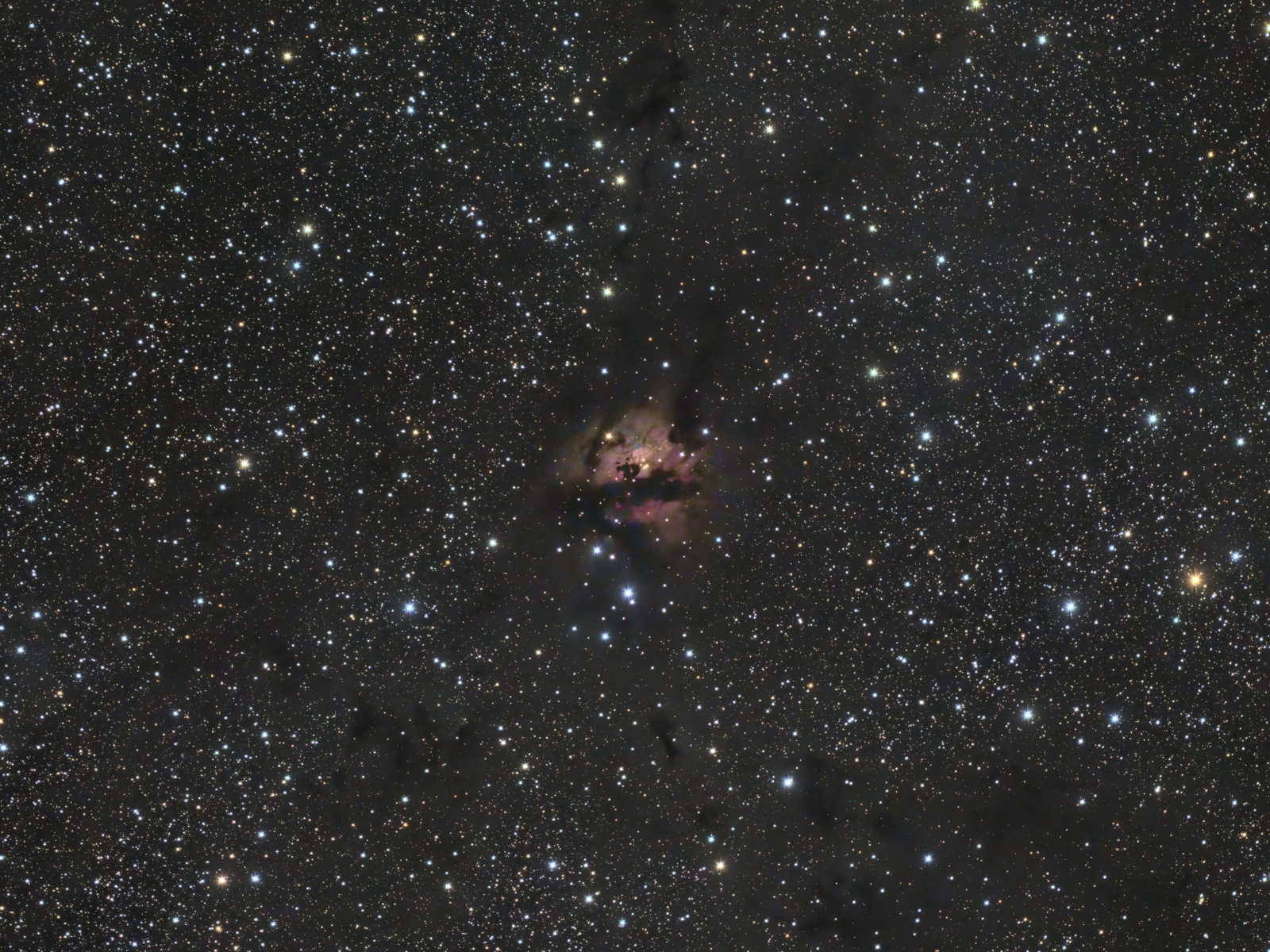
Click image for full size version
January 17, 2023
The centre of this image shows the diaphanous Sh2-187, a mix of emission, reflection and dark nebulae. It lies about 4,700 light years away in Cassiopeia. The nebula is surrounded by a large molecular cloud containing hydrogen, dust and soot. This is evidenced by the dark lanes throughout the image as well as the brighter patches around the nebula. Some of the dark nebula in this image have entries in the Lynd’s Dark Nebulae (LDN) catalogue, but others do not. Have a look at the annotated image to pinpoint them, and a few teeny tiny distant galaxies, too. There are at least two strong infrared sources and a molecular jet within Sh2-187, with at least a few new stars being born.
Tekkies:
Acquisition, focusing, and control of Paramount MX mount with N.I.N.A., TheSkyX; Guided with PHD2. Focus with Optec DirectSync motors and controller. Equipment control with PrimaLuce Labs Eagle 4 Pro computer. All pre-processing and processing in PixInsight. Acquired from my SkyShed in Guelph. Good transparency and seeing. Acquired January 14, 2023 under a moon-free sky.
Sky-Watcher Esprit 150 f/7 refractor and QHY600M camera with Optolong UV/IR and 3nm H-alpha filters
Tak FSQ-106 @ f/5 (530mm), QHY-367C Pro One-shot colour, Optolong UV/IR filter
30x5m Ha = 2hr30m
59x5m OSC = 4hr55m
Preprocessing: The WeightedBatchPreProcessing script was used to perform calibration, cosmetic correction, weighting, registration, local normalization, integration and DrizzleIntegration (OSC only. 2x, Gaussian, drop shrink 0.9).
Alignment of Master Frames: The OSC master was aligned to the Luminance master with StarAlignment. This yielded aligned Ha, Lum and Colour masters.
Gradient Removal: DynamicBackgroundExtraction was applied to the three masters.
Colour Calibration: ColorCalibration was used to calibrate the OSC master.
Deconvolution: BlurXterminator was used on each master with a custom psf FWHM determined with the PSFImage script, and star sharpening set to 0.10.
Linear Noise Reduction: NoiseXterminator was applied to each image with settings Amount=0.9 and Detail=0.15
Stretching: HistogramTransformation was applied to each image to make a pleasing, bright image with a background brightness of approximately 0.10 (Lum and OSC) or 0.08 (Ha).
Combining Luminance, Colour and H-alpha Images
Luminance addition: LRGBCombination was applied to replace the lightness of the RGB image with the Luminance master.
H-alpha Blending: PixelMath was used to add the H-alpha to the LRGB image (the target image, $T) as follows:
R: max($T[0], 1.2*Ha)
G: $T[1]
B: iif($T[0]<Ha, $T[2] + 0.06*Ha, $T[2])
Additional Processing
Star Removal: StarXterminator was used to remove the stars.
Nonlinear Noise Reduction: NoiseXterminator was used to reduce noise in the background areas of the image with settings Amount=0.9 and Detail=0.15
Contrast Enhancement: LocalHistogramEqualization was applied three times using an inverted lightness mask to protect the background and select the galaxy. A Contrast Limit of 1.5 and 1 iteration were used for each application (scale 40, strength 0.25; scale 100, strength 0.25; and scale 150, strength 0.18).
Sharpening: MultiscaleMedianTransform was used to sharpen Layers 1 – 4 with strengths of 0.03, 0.05, 0.05, and 0.04, respectively.
Star Restoration: Stars removed using StarXterminator were added back into the image using straight addition in PixelMath. The star image was used as a mask to shrink the stars slightly using MorphologicalTransformation (morphological selection mode, selection=0.11, strength =0.5, star shape 5×5 round).
Final Steps: Background, nebula and star brightness, contrast and saturation were adjusted in several iterations using CurvesTransformation with masks as required. The DarkStructureEnhance script was applied with Amount = 0. 2. ICCProfileTransformation (sRGB IEC61966-2.1; Relative Colorimetric with black point compensation) was applied prior to saving as a jpg.

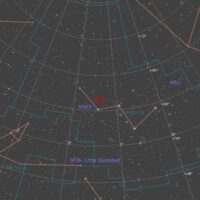
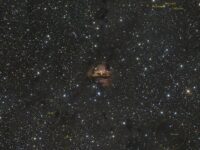
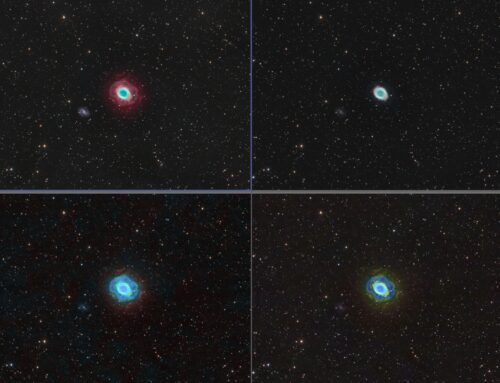



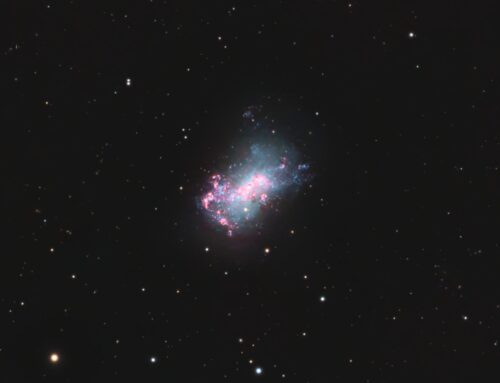
Wonderful image! Your ability is astounding in capturing so many features of the primary target, yet also having sharp, small round stars with subtle colors of blue and red. Thank you!
Thanks!
Awesome photo, as always!